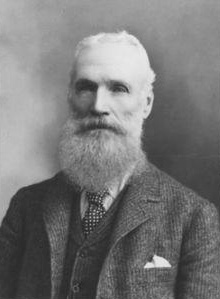Father Charles Pandosy arrived in 1859 with the Lawrence brothers and William Pion. They spent that hard winter in a crude shelter on the shores of Duck Lake before moving camp to Mission Creek and founding their church.
The early 1870s saw the arrival in K’Lakokum (Winfield) of Oregon cowboy George Simpson. His land spread out to the south and stretched up the hillside to the east.

Cattleman Thomas Wood sold his interest in O’Keefe Ranch and purchased the first 160 acres of what was to become a 3,800-acre empire.
The Postill family established a 300-acre ranch, which later grew to 5,000 acres.
With strength and optimism, the new arrivals began the establishment of Alvaston — the first pioneer community in the area. I had read that it was named for Thomas Wood, who purportedly had the middle name of Alva, but I have found no evidence of either claim in any official records. It seems more likely that Arthur Chatterton, the first postmaster, named the community after his family home in Alvaston, Derbyshire.
The period during and following the influx of European settlers was a bitter and deadly one for the First Nations people. The new arrivals introduced diseases which decimated the native population. In the 1860s it is estimated that a smallpox pandemic killed one third of the Indian population of British Columbia.
In the political arena they had no right to vote and therefore could not influence decisions made by the provincial and federal agents regarding their welfare. Dissatisfaction resulted in the gathering of Shuswap and Okanagan chiefs at the head of Okanagan Lake in June 1877, which resulted in the formation of a Shuswap-Okanagan Confederacy. Many settlers feared an Indian uprising. Indeed there is evidence that the young Natives favoured war but were restrained by their Elders. The nascent confederacy was undermined and violence averted when several influential chiefs were persuaded to withdraw from any militant action.
Until the arrival of the railroad the number of settlers in the area was very small. In the 1881 Census there were a mere 77 households in the area from Vernon to Osoyoos. In the entire Yale District, which encompassed much of the Southern Interior, from Hope to the Alberta border, and Kamloops to the international boundary, only 9,101 residents were recorded.
The situation changed in 1892 with the completion of the Shuswap & Okanagan Railway through to Okanagan Landing, which allowed our Valley to be connected by boat and rail to the CPR mainline at Sicamous. Almost all of the new arrivals were men, mainly from Britain or America, for the difficulties of travelling here almost completely excluded white women. Many of the prominent early settlers took aboriginal wives or concubines through“blanket marriages”, but promptly discarded their partners and children as soon as young, white women arrived in the community.1
1 Baughen, Penny. Carr’s Landing. A History. Vernon, BC: Carr’s Landing Community & Recreation Association, 2006.
For more information on early arrivals in Lake Country see Winfield. A History by June Vreeswijk, available online on the Lake Country Museum and Archives website.







0 Comments